Several factors, including the type of service, and eligibility criteria, determine OHIP coverage. OHIP covers the basics; major eye exams, and minor follow-up assessments, depending on the age of the patient.
Although vision therapy supports proper visual function and development, vision therapy isn’t an eye-related service that OHIP typically covers. However, some insurance providers may fully or partially cover your child’s vision therapy program.
OHIP covers eye exams for children and youth under 19. It also covers eye exams for other ages, depending on existing health criteria. But just because OHIP doesn’t cover vision therapy doesn’t mean that there aren’t 3rd party insurance options that you could explore.
What Does OHIP Cover?
The Ontario Health Insurance Plan (OHIP) provides residents of Ontario with access to essential health services. Funded by the provincial government, OHIP covers various medical treatments, including doctor visits, hospital stays, and certain surgeries. However, not all health services fall under OHIP coverage, and it’s essential to understand the criteria.
Does OHIP Cover Vision Therapy?
The burning question remains—does OHIP cover vision therapy? The short answer is: no, OHIP does not typically cover vision therapy. But it does provide coverage for routine eye exams for specific age groups and individuals with specific medical conditions.
Eligibility criteria play a significant role here. For instance, children under 20 and seniors over 65 with an eligible medical condition can receive annual eye exams covered by OHIP. Seniors without an eligible medical condition can receive eye exams covered by OHIP every 18 months. But these exams do not extend to vision therapy sessions, which are often classified by the Ontario government as specialized or non-essential treatments.
It’s crucial to consult with your eye doctor to understand whether any part of your vision therapy might be covered under special circumstances, but as a rule of thumb, don’t count on OHIP to foot the bill.
Alternatives & Private Insurance
Exploring alternative options becomes necessary, given that OHIP doesn’t cover vision therapy. Some private health insurance plans offer coverage for vision therapy, either in full or partially. It’s essential to review your insurance policy or speak with your insurance provider to understand the extent of your coverage.
Another option is paying out-of-pocket for vision therapy sessions. While this may only be feasible for some, some vision therapy clinics may offer plans for the number of sessions you book, as well as adjusted schedules with shorter sessions, and even virtual therapy sessions. Since vision therapy is personalized, your program may also be customized to accommodate. Discussing these options with your vision therapy provider is worth it to find a solution that fits your budget.
Plus, some community organizations and nonprofits offer financial assistance or grants to help cover the cost of vision therapy. Doing some research and reaching out to these organizations can potentially provide the financial support needed to access this valuable treatment. One example is the Fretz Fund, the first scholarship of its kind in Canada, open to Canadians in need of vision therapy, but without the resources to cover the costs.
What Is Vision Therapy?
Even though OHIP doesn’t cover vision therapy, its importance cannot be overlooked. Vision therapy can help improve visual skills, making it easier for individuals to engage in various activities. Improved eye coordination, focusing ability, and visual perception can enhance academic performance, sports participation, and general day-to-day functioning.
Vision therapy can help treat lazy eyes and crossed eyes, promoting proper visual development. These programs are noninvasive. Unlike surgical interventions, vision therapy involves exercises and activities designed to train the eyes and brain. This makes it a safer and non-invasive option for individuals seeking to improve their visual skills without surgery.
Vision Therapy is also often recommended as a precursor to strabismus surgery, and can help a patient properly prepare.
Lastly, vision therapy can help alleviate symptoms associated with vision problems, such as headaches, eye strain, and double vision. By addressing the root cause of these issues, vision therapy can lead to a better quality of life, making everyday tasks more enjoyable and less frustrating.
Accessing Vision Therapy
Navigating the system to access vision therapy can be challenging, but with the right guidance, it’s entirely doable. Here’s a quick list of things to consider:
- Consult an eye doctor: The first step is to schedule an appointment with an optometrist. They can diagnose your vision issues and determine whether vision therapy is suitable for you.
- Get a referral: Your eye doctor, general practitioner, or physiotherapist may refer you to a vision therapist or a clinic specializing in this treatment if vision therapy is recommended. Referrals can streamline the process and ensure you’re working with qualified professionals.
- Check insurance coverage: Review your private health insurance policy to see if vision therapy is covered. If you’re unsure, contact your insurance provider for clarification. Understanding your coverage can help you plan financially.
- Discuss payment options: Discuss payment options with the clinic if vision therapy isn’t covered by insurance. Some clinics offer different personalized treatment plans that best suit your financial needs, including adjusted session lengths, sessions spread out over a greater period of time, or even virtual therapy.
Discuss Your Vision Therapy Options
Vision therapy offers a valuable solution for individuals struggling with various visual issues. While OHIP doesn’t cover this treatment, alternative options like private insurance and payment plans can make it accessible.
By understanding the importance of vision therapy and exploring available resources, you can take steps toward improving your visual skills and overall quality of life. Don’t hesitate to contact our team at Ottawa Vision Therapy if you have questions about vision therapy. We’re happy to provide all the information you need to make an informed decision.




